BJ68
Hazard to Others
  
Posts: 102
Registered: 12-3-2012
Member Is Offline
Mood: No Mood
|
|
Cyanotype-Workshop
1.1. General Remarks:
Paper: I used "Bergger Cot-320" but every heavy min. 200g/m2 watercolor paper should work.
Normal paper which I used for the first test, was very tricky because it tears very easily if wet.
A other paper (paper tablecloth) has reacted with the solution and was stained dark blue....so if you try paper alternatives, check if they are okay.
For Workshop: It´s a good idea to mark the paper on the back side with a lead pencil, because the kids will find their work easier after drying.
Photosensitive solution: This will stain everything....and it will be visible only after a while (exposure to light). Sometimes you will get surprises
where you have stained something. So be careful.......
1.1. Recipe 1: The easy one:
1.1.0. Remarks to the Chemicals:
These are non toxic, so they are suitable for workshops with small children. The only hazard will be the use of concentrated (30%) hydrogen peroxide
if you are to lazy to make a dilution. So if you apply the normal precautions which you are doing in the household with cleaning agents you are
fine....
1.1.1. Chemicals:
- Ammonium iron(III)-citrate (green) (CAS 1185-57-5) iron-content 14.5-16% Fe
- Potassiumferricyanide (CAS 13746-66-2)
- Polysorbate 20 (Tween 20) (CAS 9005-64-5)
- Hydrogen peroxide 3% (CAS 7722-84-1)
- distilled water (CAS 7732-18-5)
1.1.2. Preparations (Recipe):
a) Solution A: Put 25 g Ammonium iron(III)-citrate in a graduated cylinder and add about 70 ml distilled water and stir until all solids are
dissolved. After that adjust the level to 100 ml with more distilled water.
Solution A is protected from light and stored in a fridge, because mold will very easy grow.
b) Solution B: Put 10 g of Potassium ferricyanide in an other graduated cylinder and add again about 70 ml of distilled water. Stir again and after
all has gone in solution, fill the level up to 100 ml.
c) If more or less quantities are to make multiply or divide the amounts.
d) Photosensitive Solution:
Combine equal amounts of the both solutions (A and B) and add a few drops of Tween 20. The Tween 20 will be a wetting agent.
e) With a sponge or brush without metal apply the solution at the paper and let it dry. It´s important to use only tungsten light and no fluorescent
lights or day light because the solution is sensitive to UV. Let it dry in the dark and store it in black plastic bags which e.g. are used for trash.
Make sure, that you are not storing it too long.....
f) Exposure: You can place objects like leaves, pencils and so on (photogram) at the paper or you use hand, feet or even the whole body. But be very
fast, because 60 seconds where enough exposure at a sunny day in August (Germany South-Bavaria).
g) Fixation: Wash the paper until the washing water (use tap water for it) is not yellow colored anymore and the non exposed areas of the paper are
white again. This water has to be changed if it is very yellow.
After that rinse the sheets in a bucket with water, because it takes a while until all chemicals are gone.
At the workshop 15 min in a bucket filled with water and where a small flow of water poured in where enough.
h) Blueing or final treatment:
To stain the cyanotype really blue put the sheets of paper in a solution with diluted hydrogen peroxide 10 to 20 ml of 3% solution at 1000 ml of water
are enough.
i) Let the sheets dry in the shadow. Ready...
j) Waste:
All Solutions can go in the sink and sheets of paper and even the chemicals can go in the normal trash.
1.2. More complicated recipe, but you will get the chemicals more easily, but this stuff is more harmful than the stuff before.
1.2.1. Chemicals:
Iron(III)chloride Hexahydrate
Ammonia-Solution 25%
Citric acid
Potassium ferrycyanide
Hydrogen peroxide
1.2.1.1. Remarks for the Chemicals:
Iron(III)chloride is used for etching electronic circuit boards. So look at vendors for electronic components. This chemical is hygroscopic, the
bottle has to be tight otherwise you will get a brown liquid after a while.
Ammonia-Solution: I think you can get it over a hardware store...here in Germany it´s a common chemical which you get in a pharmacy. Be careful with
the concentrated ammonia bottel, because it will develop internal pressure from ammonia gas. If you open it, in a confined space you will stand in a
small cloud of irritant ammonia.
1.2.2. Recipe:
Make three solutions:
a) 25 g citric acid filled up to 100 ml with distilled water.
b) 20 g Iron(III)chloride filled up to 100 ml with distilled water.
c) 22 g Potassium ferricyanide filled up to 100 ml with distilled water.
and prepare
d) 40 ml 25% Ammonia-Solution
My way was: a) + b) + d) and than + c)
I think the chronological order is not important......only avoid to pour the ammonia solution into a warm solution, should heat development occur.
If all 4 solutions are mixed, this stuff is light sensitive an ready for Step e) from "1.1. Recipe 1: The easy one:".
2. I used "1.1. Recipe 1: The easy one" for coating linen sheets, too.
For that I used a 5 L pump sprayer, but please wear a good dust mask, because the fog is really nasty.
For 4 sheets (see picture) I used over 4 L of the combined solutions.
Bj68
So and here are the pictures:
Ammonium iron(III)citrate
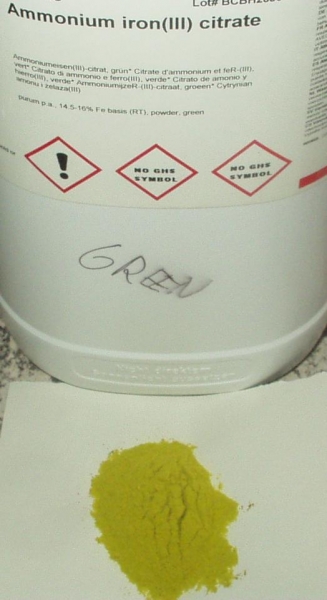
'Potassium hexacyanoferrate(III)
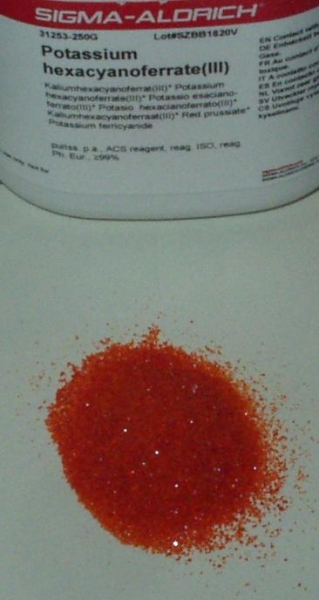
Both solutions:
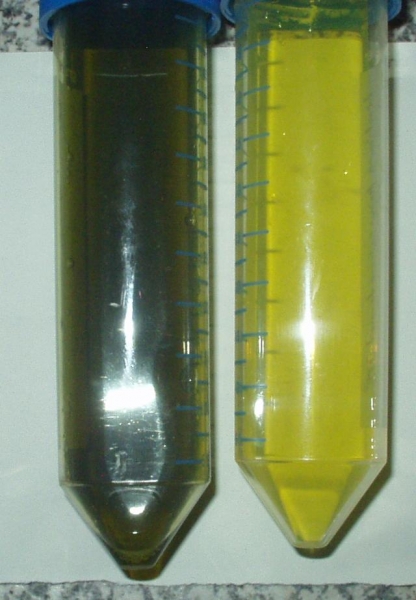
Photosensitive Solution:

Applying the solution:

Drying:

Exposure:
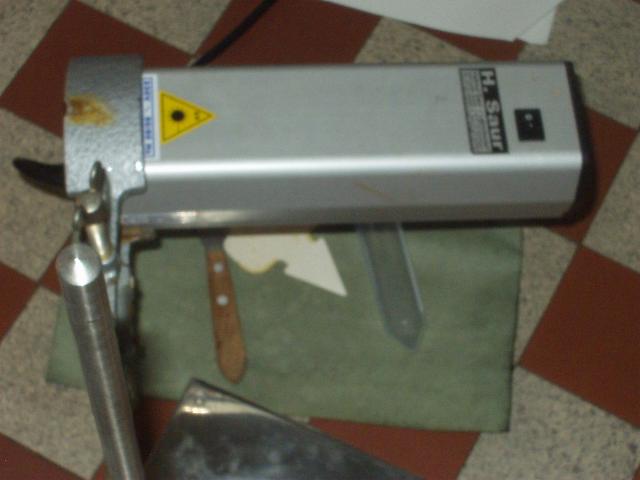
Exposure-Results:

Wash with water:
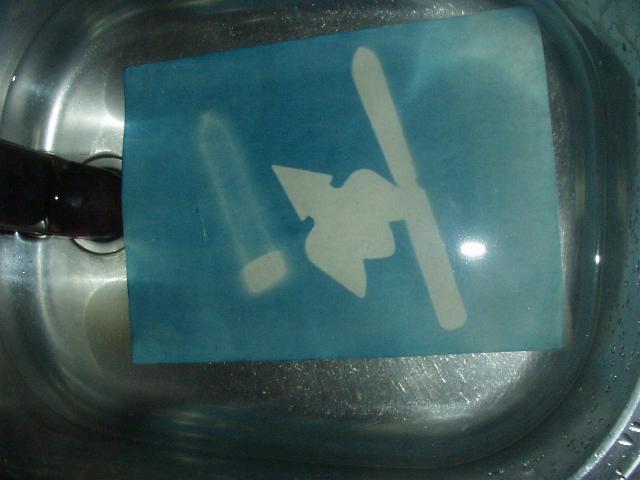
Blueing with hydrogen peroxide:
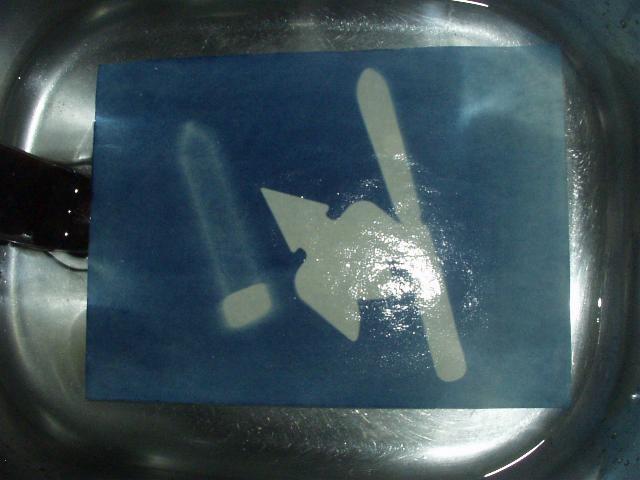
Size of linen sheets:
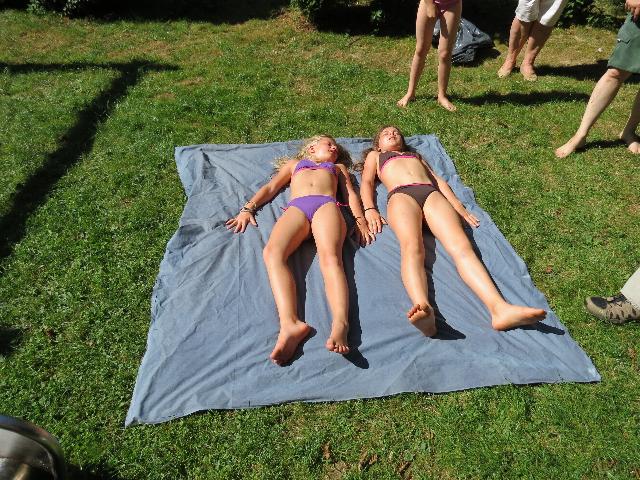
Pictures from the workshop will follow...okay had worked here are the pictures form the workshops:
First one:
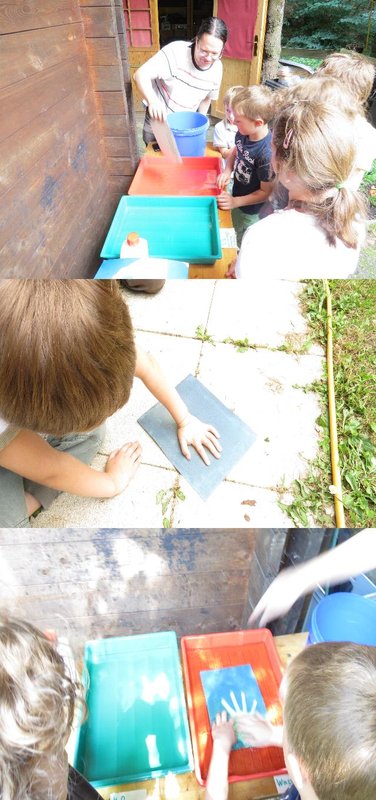
Results:
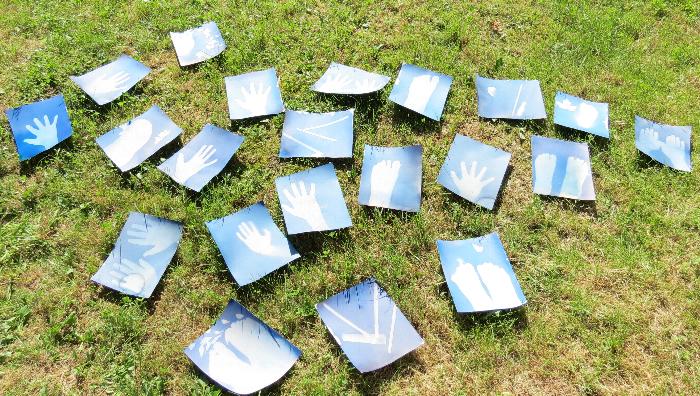
Second one:

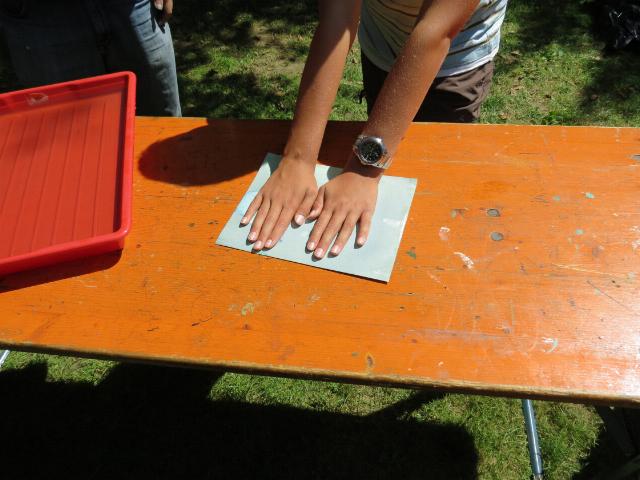
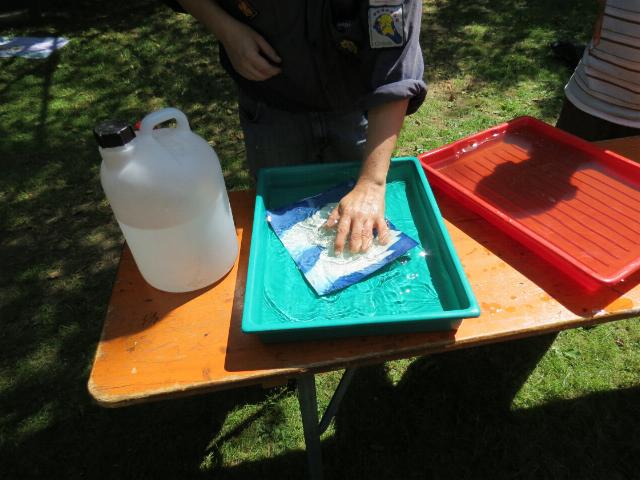

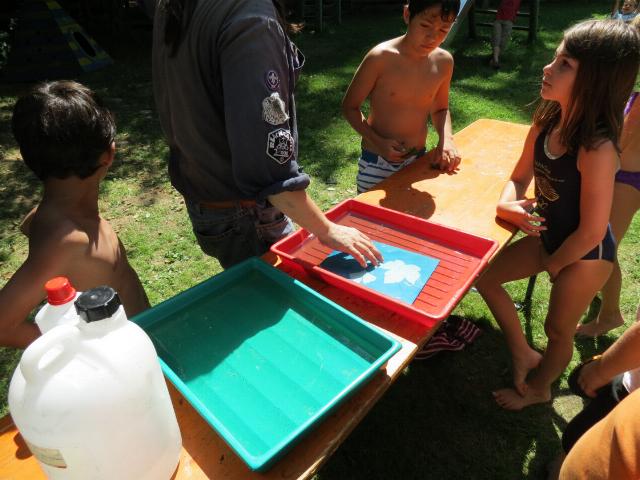

Results:
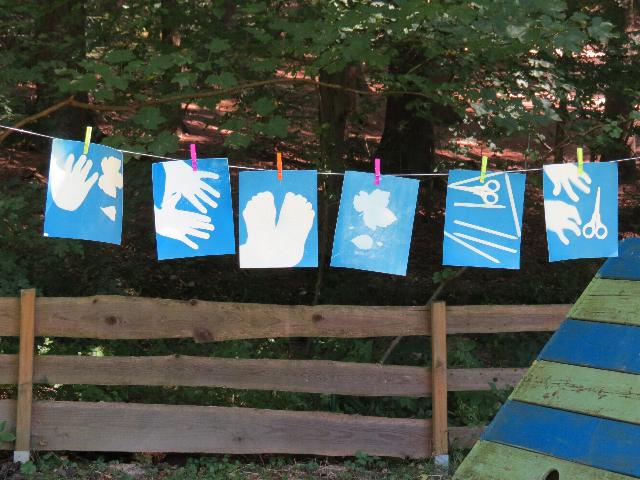
[Edited on 1-2-2013 by BJ68]
|
|
|
bfesser
Resident Wikipedian
    
Posts: 2114
Registered: 29-1-2008
Member Is Offline
Mood: No Mood
|
|
Fantastic! I remember doing this when I was little with pre-made sheets, but it never worked very well. Perhaps I'll give it a go again. Thank you
for sharing.
You may only have 5 posts so far, but they're quite impressive. I look forward to the future.
[Edited on 2/1/13 by bfesser]
|
|
|
|